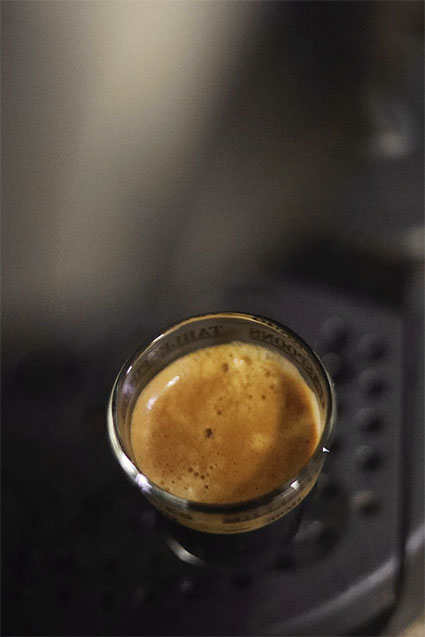What does our espresso's cream show us?

There are many signs to distinguish a good espresso from an experienced or even an inexperienced barista - the rich, delicious cream is definitely one of them.
The cream in espresso is very important and one of the things that makes it different from the other extracts. Besides, the first name of espresso, when it was discovered in Italy, was "Caffe Crema". The successful cream in espresso is due to several factors, each of which contributes in a different way to its creation.
What is espresso cream?
The espresso cream is created thanks to the pressure with which the water penetrates the ground coffee beans. Thanks to the pressure and temperature, the coffee oils are emulsified and their interaction with the carbon dioxide creates many small bubbles, which are perceived as a layer of "foam", the well-known espresso cream.
How is the right cream in an espresso?
 Although espresso cream is, like everything else, a matter of taste, there are some objective signs that can separate good cream (and therefore successful extraction) from bad cream. Trying to categorize the characteristics that make our espresso cream "good" or even "successful", we stand by the following.
Although espresso cream is, like everything else, a matter of taste, there are some objective signs that can separate good cream (and therefore successful extraction) from bad cream. Trying to categorize the characteristics that make our espresso cream "good" or even "successful", we stand by the following.
Color: The color of the cream should be neither too dark nor too light, but ideally close to hazelnut brown. Anemic cream usually indicates under-extracted coffee or insufficient machine warm-up, while too-dark cream means just the opposite, over-extracted coffee, which may be due to grinding, extraction temperature or even a machine that has been "ignited" by excessive warm-up. The correct color of the cream should be homogeneous, sometimes with streaks reminiscent of tiger fur. Large "patches" and areas with a large color difference also indicate that something is wrong.
Texture: The right cream has a soft, velvety texture, with even distribution of bubbles. Cream that has gaps, large bubbles, or a texture that looks "rough" also reveals extraction problems.
Stability: The cream does not last long, due to its nature, but it should stay on the surface for at least 1.5 - 2 minutes. If we have doubts about the quality of our extracts, we can "sacrifice" an espresso, observing the behavior of its cream.
Density: Roughly, the cream should take up about 1/10 of the espresso. Cream that is too thick or, conversely, too thin, also reveals that something has gone wrong in making the coffee.
Does good cream necessarily mean good coffee?
Of course, creating a good cream in an espresso depends not only on the correct extraction, but as we have already said, on many other factors as well. The freshness, the roasting and of course the variety of the coffee are among the primary factors that catalyze the creation of the coveted cream in our cup.
Especially in terms of variety, it is known that adding Robusta to a blend helps in the rich espresso cream. However, if one does not like the intensity and robustness of Robusta, one will not be satisfied with such a cup of espresso, no matter how thick and delicious the cream. Fans of the most complex flavors Arabica, may necessarily make some compromises when it comes to the cream in their espresso. After all, good and bad coffee is largely a matter of taste, not to mention the fact that a well-formed cream is a clear sign of a good extraction.
The next time you drink a homemade coffee, take a look at the cream. If something does not satisfy you, think before you change the mix, read the above tips again.








